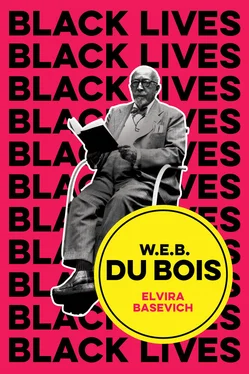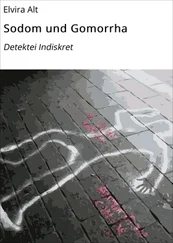Du Bois believed that bearing witness to anti-black violence and the resultant trauma shapes the historical legacy of black liberation struggles against white supremacy. In his fictional and journalistic portrayals of the black lives lost to racial violence, Du Bois wanted to stir in his reader a sense of compassion and shared grief with the segregated black community. He endeavored to portray the singular and irreplaceable lives lost; and sometimes leaned on poetic depictions of a person’s subjective consciousness that is snuffed out in death. Given the sheer number of deaths and the lack of quality investigative journalism, with the exception of the efforts of Ida B. Wells and black-owned presses, it is difficult to track all the victims of anti-black violence over the centuries and to tell the story of their lives. Even today, the few names reported by the press represent a fraction of the many lives lost; and headlines often exclude black women and members of the trans community whose lives are notably at risk. For Du Bois, the task of political critique is to defend the humanity of the vulnerable, while also capturing the vast scale of anti-black violence and disenfranchisement without reifying the lost lives into a statistic or an abstract status of “victimhood.” His intuition was that empathizing with the individual behind the statistic would help the public resist the passive acceptance of white supremacist ideology and violence as a customary feature of modern American life.
The Black Lives Matter movement captures the black lives lost in routine policing practices across the country. By bringing attention to each individual victim with his or her diverse family background, gender, and class, the movement showcases how racial blackness mediates the public’s perception of threat and exposes black lives to police violence.
Consider the brief life of Tamir Rice. In 2014, 12-year-old Rice was playing with a toy gun in a Cleveland park and a white man waiting for a bus called 911 to report him as an armed belligerent. Within seconds of arriving on the scene, a white officer fatally shot Tamir in the chest. On the day he died, his mother, Samaria, had packed him a turkey sandwich for lunch and had given him a few dollars to buy chips and juice from the corner store. Tamir still enjoyed playing with Lego and a Teenage Mutant Ninja Turtle video game; he was inseparable from his 14-year-old sister, Tajai. The Rice family had moved to the neighborhood in part to be close to the park in which Tamir was eventually killed. His older sister was the first to rush to her dying brother before the officer who had shot him tackled and arrested her as Tamir lay dying.
Consider, too, the brief life of Freddie Carlos Gray, Jr. He was 25 years old when he was “nickel dimed” by the Baltimore Police Department after being randomly targeted in his neighborhood. As he had done before, Gray ran at the approaching police vehicles and was then arrested. To “nickel dime” detainees is to bind their hands and feet without fastening their seatbelts, leaving them unable to protect their heads. Officers proceed to make sudden stops and sharp turns to fling their detainee inside the metal cage of the police van. Within an hour of his arrest, Gray’s spinal cord was nearly 80 percent severed; essentially, he had suffered internal decapitation. A lifelong Baltimore resident, friends and neighbors called Gray “Pepper.” He had a twin sister Fredericka; they grew up in crushing poverty, just a few blocks from where he was arrested. He had dropped out of high school in the ninth grade. Before being killed, he had suffered food insecurity and childhood lead poisoning so severe that a local attorney had filed a lawsuit on behalf of the Gray children; medical reports confirmed that they had permanent brain damage.
Although the deaths of black men and boys often dominate headlines, black women are extremely vulnerable to police violence. In Fort Worth, Texas, Atatiana Jefferson was killed during a wellness check in 2019; a neighbor had reported that her front door was ajar and was worried about the Jefferson household. Fearing an intruder, Jefferson approached her window to inspect the commotion outside. As she appeared in the window, an officer shot her through it. He had not announced who he was or why he was there. Atatiana had been playing video games with her eight-year-old nephew, Zion. A recent college graduate, she worked in the pharmaceutical industry and was planning to attend medical school. An only child, she was the primary caregiver to her parents, both of whom passed away soon after her murder.
In each of these cases, to this date, none of the officers have been held criminally responsible. Jefferson’s killer was recently indicted, though convictions are rare. The above is just a snapshot of the many black lives lost. Each life tells a different story about the intersection of gender, class, and age in the devaluation of black lives. Like Atatiana Jefferson, African-American women are often killed by police in their own homes, including Korryn Gaines, Kathryn Johnston, Yvette Smith, Aiyana Stanley-Jones, and Tarika Wilson, whereas black men are often targeted by racial profiling. In building a racial justice movement, Du Bois compelled white folk to conceive the world from the perspective of African Americans, i.e., to hear as they would hear the footfall of police boots at the front door, to feel their fear at an approaching police vehicle. Such an empathetic attitude is an essential tool for preventing future violence. And yet, when vulnerable voices share their distinct perspective on police practices (or the polity-at-large), they are often distrusted and discredited .
Trust: do you see what I see?
Du Bois argued that the color line cloaked racial realities. In part, it did this by cultivating distrust of black voices across the color line. Whites often reject the testimonies of black and brown communities, as if they do not bear witness to a shared reality with them. Conversely, after enduring long-standing scrutiny and indifference, understandably, victims of racial injustice come to distrust the white-controlled polity; and they doubt its willingness to listen to them or police departments’ capacity to serve their communities, in which the police often function like an occupying military force. Mutual distrust strengthens the color line: whites refuse to acknowledge racial realities and, in turn, an interracial justice effort to dismantle the color line becomes impracticable. And yet there are moments when, as Du Bois puts it, the “veil” lifts and the black experience of the color line emerges, and is recognized, in public consciousness. The success of the Black Lives Matter movement is to have conveyed to the public the reality of anti-black violence at the hands of police and vigilantes that has long beleaguered African Americans.
Mutual trust is necessary to sustain the bounds of civic fellowship and a shared sense of political fate. Trust often mediates what one takes to be true and is ready to accept as a feature of a shared reality that binds a stranger’s destiny to one’s own. In granting credibility to an interlocutor, one takes their experiences of the world to be a true representation of the world. Yet in an age of the rapid dissemination of information through the internet and social media, the refusal to trust black voices persists. Distrust and suspicion are the cause of racial violence – a fact exemplified in the killing of Eric Garner. The moments leading up to Garner’s death were caught on cellphone video and watched by millions. A Staten Island resident, Garner was killed in 2014 in an illegal chokehold by ex-officer Daniel Pantaleo. 11Yet there remains little consensus about what the footage means. Prior to his death, Garner repeated eleven times “I can’t breathe,” a phrase that is now a rally cry of the BLM movement. Pantaleo did not believe Garner that he really couldn’t breathe; or else, he simply didn’t care. Likewise, many members of the public still do not believe that Garner’s death was avoidable, or else they simply don’t care one way or another. In effect, they just don’t trust that he really couldn’t breathe.
Читать дальше












